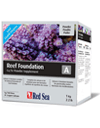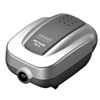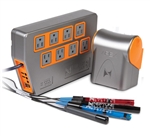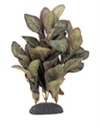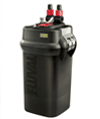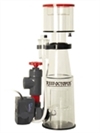Return Pumps: Why Spend More?

The Aquarium hobby can be expensive. The prices of livestock and gear can be intimidating. At the same time, some gear is very cheap, and hobbyists wonder if the expensive stuff is worth the money. Today we want to look specifically at return pumps. What do you get when you spend more on your return pump? Are they worth it?
What does a return pump do?
Before getting into what spending more on a return pump gets you it is best to understand what we mean by a return pump. A return pump is a water pump that sits in a sump filter or the back of an all-in-one aquarium. The pump creates the water flow that passes through the filtration and other aquarium gear. The return pump “returns” the water from the sump or filter chamber back to the aquarium. Without a return pump, the aquarium’s filtration, and temperature control stop functioning.
What’s the worst that could happen?
It is good to understand just how important a piece of gear is when considering how reliable it needs to be and how much is worth spending on it. If you removed the return pump most simple reef aquariums would be perfectly fine for several days with some minor effort. In a reef aquarium, the majority of the oxygenation comes from the circulation pumps in the tank and the majority of the filtration comes from the natural bacteria in the tank. If you move the heater to the display tank and do a water change to compensate for the lack of filtration and supplementation then you could go a week before replacing the return pump. However, in a large reef aquarium with lots of fast-growing SPS corals, a return pump failure can be very risky. Calcium reactors will stop working, the temperature shift will stress corals, and nitrate and phosphate will start to accumulate, stressing corals even more. In aquariums with lots of sensitive corals, a return pump failure could mean thousands of dollars worth of coral losses. In these aquariums, it is essential to get a reliable return pump and keep a backup on hand.
In a case where a return pump does not simply turn off, but catastrophically fails, things can be very bad. A return pump that runs dry can cause a fire or electrocute the tank’s inhabitants or someone nearby at the time. All UL-listed pumps have run dry protection and regulated cord thickness to ensure that the pump is safe in the event of catastrophic failure. This is not always the case for the cheapest no-name pumps.
How long will the pump last?
Since a return pump failing can be bad, and anything with moving parts eventually fails, how long return pumps last is a critical question. One pump may be half the price of another, but if it only lasts 2 years vs 10 years then you're paying more for cheap pump in the long run. In general, pumps with a brand name will have been manufactured for longer and will have a track record that will let you know that the pump will last.
Iwaki Pumps can last for over 20 years without any replacement parts. A good indicator of how long a pump will last is how long the warranty is. If the manufacturer expects the pump will fail after a year it wouldn’t make sense for them to offer a 3-year warranty, or they will lose a lot of money replacing pumps. Seachem Impulse Multi-Function Pumps have a 5-year warranty and Abyzz Pumps (coming soon!) have a 10-year warranty. By contrast, there are pumps on the market that have 90-day warranty.
Are there replacement parts?
If your pump is broken or fails, will you need to replace the whole pump or can you find replacement parts? Impellers, power supplies, and pump controllers all have finite lifespans and might need to be replaced. Spending a bit more on a pump because there are available replacement parts is smart when considering the long-term cost of running the pump. We carry lots of replacement pump parts for a variety of pump brands. Some brands with a reputation for making parts available for years and even decades are Lifegard, Octopus, Tunze, and Iwaki.
Is there support?
As pumps get more complicated, they need more support. Some pumps now have WiFi control or built-in controllers with various error codes and smart features. If you get an error or have a question about installing the pump is there anyone in the US to call? Buying from a company with US support usually means spending more but it is important to some people. In our experience, Octopus, Lifegard, and Simplicity all have very responsive US-based support that is willing and able to answer your questions.
Is the pump controllable?
Modern DC pumps often use direct current to speed up and slow down the pump. While many users will simply set the pump at one speed and never touch it again, for some users the ability to electronically dial in the pump can be important. Those with small all-in-one aquariums might want the return pump to create wave patterns, and some advanced users may want the pump to slow down when they feed the fish and then automatically speed back up afterward. Pumps with more advanced control such as integration with Hydros and Apex controllers, WiFi-based control, and temperature and RPM monitoring command a higher price. Abyzz, Neptune COR, and Reef Octopus pumps have some of these features.
Is the pump quiet?
We all have aquariums to enjoy looking at our aquatic animals in our homes. A pump that sounds like a jet engine can dramatically detract from our enjoyment. Most small return pumps are relatively quiet even if they are cheap. As pumps get larger they get louder. Expensive pumps have technology to make sure the pump is quiet. In our opinion, with any pump over 1000 gallons per hour, it is worth spending more to make sure the pump is quiet enough to be pleasant inside your home. In general, DC pumps with a separate power supply and controller are far more quiet than the simpler AC-powered pumps. The DC pumps from Lifegard, Simplicity, Reef Octopus, and Abyzz are all very quiet. Some particular standouts are the Abyzz and Octopus pumps which come in very-large sizes. AC pumps in these sizes would simply be too loud to tolerate in a living room.
What pumps do we recommend?
- Budget Option
- For budget-minded aquarists, it is hard to beat the Lifegard Aquatics Quiet One Pro Pumps. These are reliable, relatively quiet, and very affordable. The four smallest sizes are less than $30 and perfect for nano tanks. These pumps have been manufactured for many years and have US support as well as available replacement parts.
- Mid Range
- The Lifegard Aquatics Quiet One DC Pumps are a good mid-range option. These are very quiet and have a controller enabling some advanced features such as flow control and wave patterns.
- High End
- Reef Octopus OCTO VarioS Circulation Pumps are very quiet and reliable, have plenty of replacement parts, and have advanced control with integration into Hydros and Apex controller systems. They also include float valves for added run-dry protection. They are expensive but not extravagant.
- Ultimate
- Abyzz Pumps (coming soon) are the nicest pumps money can buy. They are super-powerful, super-reliable, extremely quiet, allow third-party controller integration, and have the longest warranty of any pump we know of. The price tag matches this feature set. If you want the best, then Abyzz is it.
|







